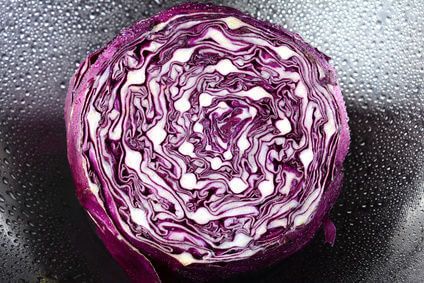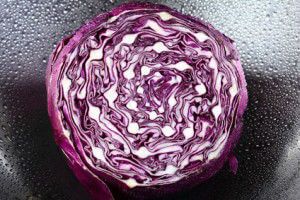
A study conducted by the ARS Beltsville Human Nutritional Research Center in Maryland, found that red cabbage has 36 anthocyanins, including eight that had never been detected before.
Anthocyanins are a group of very beneficial compounds that are considered potent antioxidants linked to lowering blood pressure, boosting heart health and the entire cardiovascular system, as well as protecting us against diabetes.
The primary characteristics of this vegetable, including its red color and bitter flavor let you know that when consuming it your body is getting these important phytochemicals that are known to help fight cancer and contribute to your overall health.
There are many reasons to include red cabbage in your diet, here are four good ones.
Cancer prevention
As mentioned, red cabbage contains potent cancer fighting ingredients. Its red pigment is derived from a flavonoid that functions as an antioxidant, preventing some types of cancer by stopping the growth of cancer cells.
The antioxidant benefits of cabbage alone are enough to rank it as a top cancer-fighting food, but it goes beyond that. The glucosinolates found in cabbage can be converted into isothiocyanate compounds which can help to prevent all types of cancers, including breast cancer, bladder cancer, colon cancer and prostate cancer.
Digestive health
Cabbage juice is considered to be one of the most healing nutrients for ulcer repair and is one of the strongest stimulants for the body to produce acid. Many people have low stomach acid which causes digestive problems, increasing the risk of infection. By consuming just a few teaspoons of the juice before eating a meal, it can help to significantly improve digestion.
A study published in the Western Journal of Medicine found that cabbage juice is effective in promoting rapid healing of peptic ulcers.
Anti-inflammatory benefits
Red cabbage offers a wealth of anti-inflammatory benefits that helps keep inflammation in check. While the body needs some inflammation in order to remain healthy, too much can cause many different health problems. If the immune system mistakenly triggers an inflammatory response, this can lead to all types of damage including cancer, chronic illness and many other diseases.
The rich anthocyanins in cabbage are just one of the reasons that this vegetable is considered to be a potent anti-inflammatory.
Eye health
There are a number of different forms of vitamin A, and all can contribute to eye and vision health with each playing a different role. One cup of red cabbage offers 33 percent of the recommended daily intake of this vitamin, delivered in three different forms, including beta-carotene, lutein and zeaxanthin.
 Beta-carotene is converted into a form of vitamin A known as retinol that eye cells use to detect light and convert into nerve impulses. The lutein and zeaxanthin serve as antioxidants that are known to protect the retina and even help prevent age-related macular degeneration.
Beta-carotene is converted into a form of vitamin A known as retinol that eye cells use to detect light and convert into nerve impulses. The lutein and zeaxanthin serve as antioxidants that are known to protect the retina and even help prevent age-related macular degeneration.
To get the most nutrients out of red cabbage, it is best prepared as close to raw as possible. It can be sautéed briefly, but is best added raw to a salad or juiced
-The Alternative Daily
Sources:
http://www.sciencedaily.com/releases/2008/03/080307081409.html

